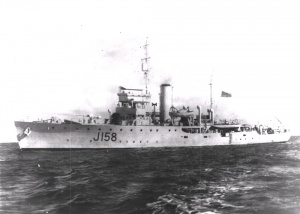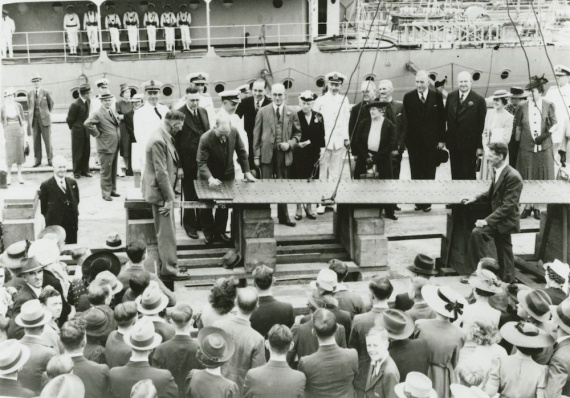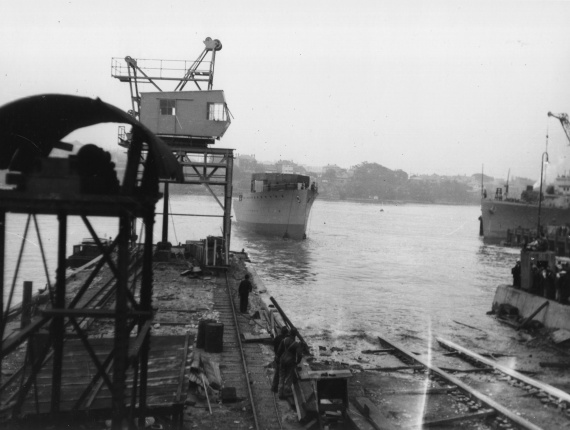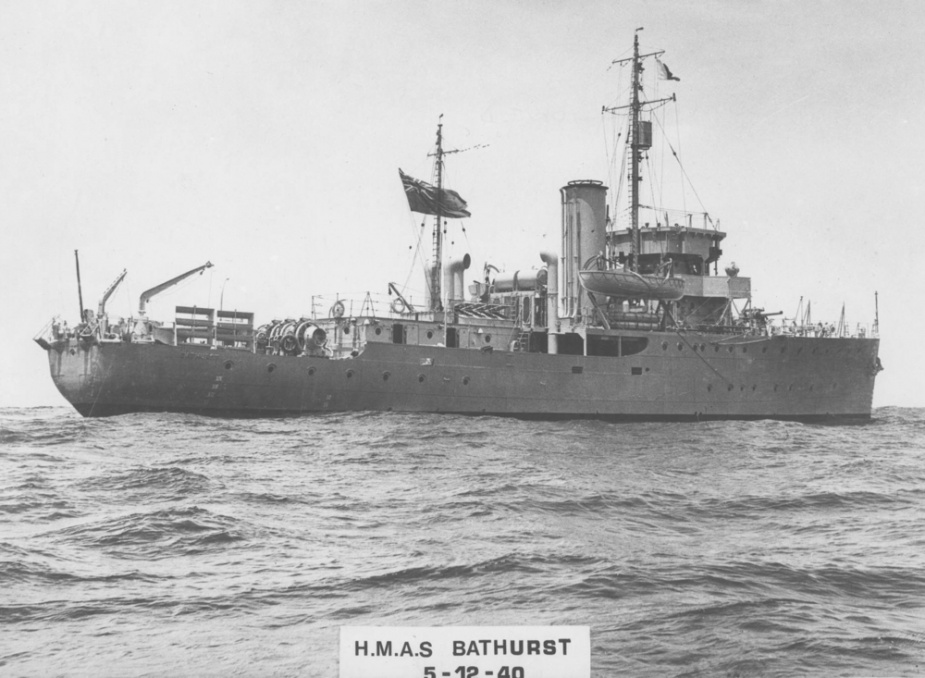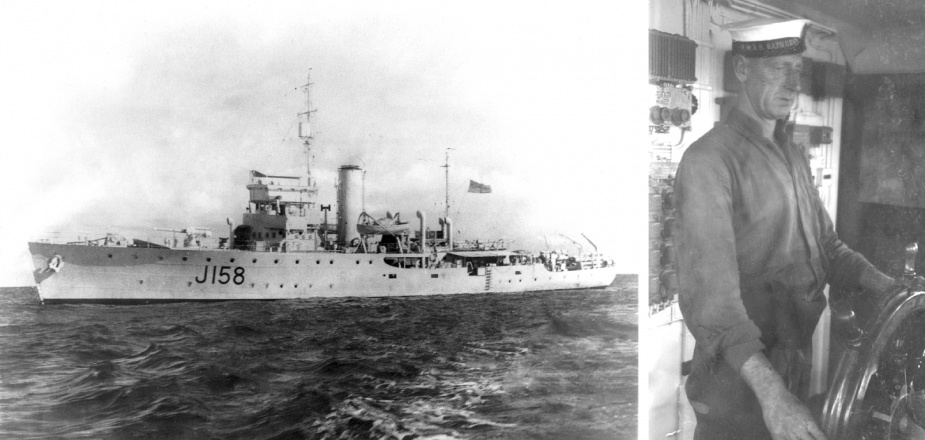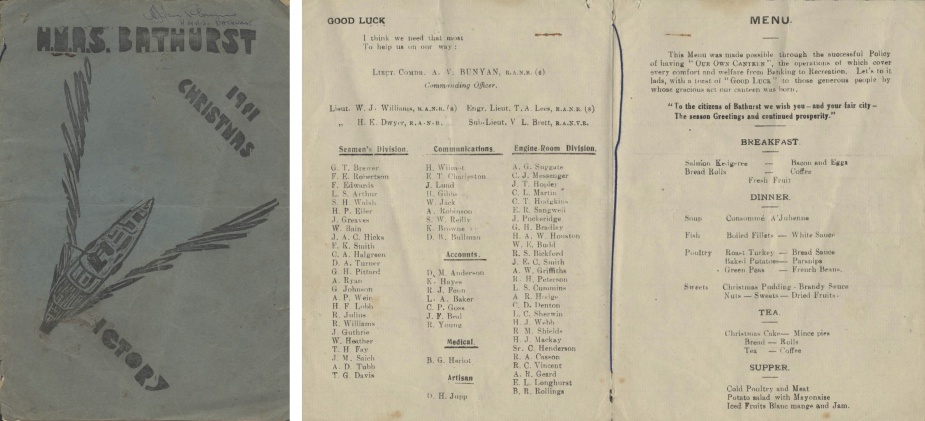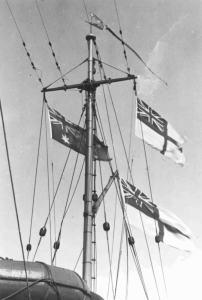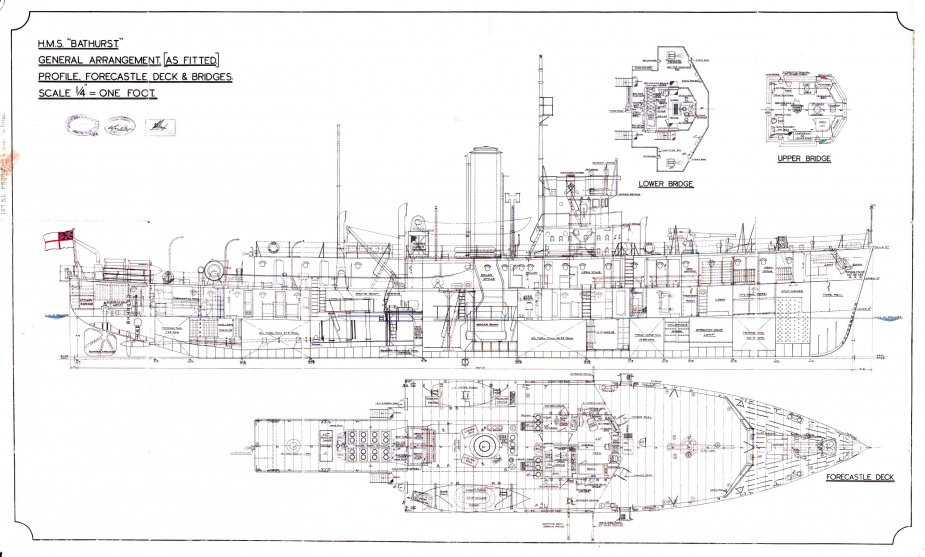HMAS Bathurst (I)
| Class |
Bathurst Class |
|---|---|
| Type |
Australian Minesweeper |
| Role |
|
| Pennant |
J158 |
| Motto |
Strike Hard |
| Builder |
Cockatoo Docks and Engineering Co Ltd, Sydney |
| Laid Down |
10 February 1940 |
| Launched |
1 August 1940 |
| Launched by |
Mrs Doyle, wife of the Engineer Manager, Garden Island Dockyard |
| Commissioned |
6 December 1940 |
| Decommissioned |
27 September 1946 |
| Fate |
Sold for scrap on 21 June 1948 |
| Dimensions & Displacement | |
| Displacement |
|
| Length | 56.69 metres |
| Beam | 9.45 metres |
| Draught | 2.59 metres |
| Performance | |
| Speed | 15 knots |
| Complement | |
| Crew | 85 |
| Propulsion | |
| Machinery | Triple expansion engine, 2 shafts, 2,000 hp |
| Horsepower | 2000 |
| Armament | |
| Guns |
|
| Awards | |
| Battle Honours | |
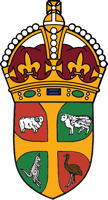
HMAS Bathurst (I) was the first of sixty Australian Minesweepers (commonly known as corvettes) built during World War II in Australian shipyards as part of the Commonwealth Government's wartime shipbuilding programme. Twenty (including Bathurst) were built on Admiralty order but manned and commissioned by the Royal Australian Navy. Thirty six were built for the Royal Australian Navy and four for the Royal Indian Navy.
HMAS Bathurst (I) was laid down at Cockatoo Docks and Engineering Co Ltd, Sydney, NSW on 10 February 1940. She was the first RAN warship to carry the name of the regional city in the central tablelands of NSW, located 200 kilometres north west of Sydney. She was launched on 1 August 1940 by Mrs Doyle, wife of the Engineer Manager, Garden Island Dockyard.

